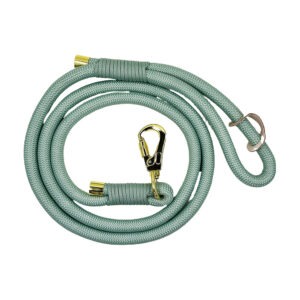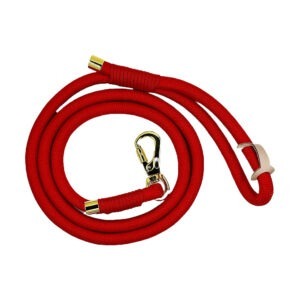Embarking on a road trip with your furry friend can be an exciting adventure, but it requires careful planning and preparation. To ensure a smooth and enjoyable journey for both you and your canine companion, it’s essential to understand your dog’s needs and take necessary precautions. This article provides a comprehensive guide on preparing your dog for a long road trip, covering everything from pre-trip preparations to post-trip care.
Understanding Your Dog’s Needs
Before hitting the road, it’s crucial to understand your dog’s specific needs. Every dog is unique, and considering factors such as breed, age, and temperament can help you tailor your preparations accordingly. Taking into account your dog’s preferences and characteristics will contribute to a more comfortable and enjoyable experience for both of you.
Pre-Trip Preparations
Vet Check-ups
Prior to embarking on a long road trip, schedule a visit to your veterinarian. A thorough check-up will ensure that your dog is in good health and up to date on vaccinations. Discuss any concerns or specific considerations with your vet, as they can provide valuable advice tailored to your dog’s individual needs.
Some of our latest products...
Training Your Dog for Long Car Rides
If your dog isn’t accustomed to car rides, it’s essential to gradually introduce them to this mode of transportation. Start with short trips around the neighborhood, gradually increasing the duration. This process allows your dog to get used to the motion and associate car rides with positive experiences. Rewarding your dog with treats and praise can help reinforce positive behavior.
Packing Essentials
When packing for your road trip, make a checklist of essential items for your dog. These may include:
- Food and water bowls
- Sufficient food supply for the duration of the trip
- Bottled water for drinking (tap water may vary in taste and quality during travel)
- Medications and any necessary prescriptions
- Leash and collar with identification tags
- Comfortable bedding and blankets
- Favorite toys or chew items for entertainment
- Waste bags for clean-up
- Grooming supplies
- Doggy first aid kit
Health Considerations
Ensuring your dog’s health and well-being throughout the journey is crucial. Here are some health considerations to keep in mind:
Managing Food and Water
Maintain a regular feeding schedule during the trip, providing your dog with familiar and balanced meals. Avoid sudden dietary changes, as they can lead to digestive upset. Pack enough food for the duration of the trip, ensuring it is stored in a secure and airtight container to maintain freshness. Similarly, carry an adequate supply of water to keep your dog hydrated, especially during hot weather.
Dealing with Motion Sickness in Dogs
Some dogs may experience motion sickness during car rides. If your dog shows signs of nausea, such as drooling or vomiting, consult your veterinarian for possible remedies. Gradually acclimating your dog to car rides and ensuring proper ventilation within the vehicle can help alleviate symptoms. Avoid feeding your dog immediately before the trip to minimize the risk of motion sickness.
First Aid and Emergency Preparedness
Having a well-stocked first aid kit specifically for your dog is essential for any road trip. The kit should include items such as bandages, antiseptic wipes, tweezers, and any necessary medications prescribed by your veterinarian. Familiarize yourself with basic first aid procedures for dogs and research emergency veterinary clinics along your planned route.
Safety Measures
Ensuring your dog’s safety during the trip is of utmost importance. Consider the following measures:
Ensuring Your Dog’s Safety During the Trip
Keep your dog securely restrained in the vehicle to prevent injury and distractions. Options include using a crate, a doggy seat belt, or a secured harness. Never allow your dog to ride with their head outside the window, as it poses a risk of injury. Additionally, never leave your dog unattended in a parked vehicle, as temperatures can rise rapidly, leading to heatstroke.
Legal and Regulatory Considerations for Traveling with Pets
Before embarking on your road trip, research and familiarize yourself with the laws and regulations regarding traveling with pets in the regions you’ll be visiting. Some states or countries may have specific requirements, such as mandatory vaccinations or permits. Carry copies of your dog’s vaccination records and identification information for easy access if needed.
Keeping Your Dog Comfortable and Entertained
A long road trip can be stressful for some dogs. To help keep your dog calm and entertained:
Handling Dog Anxiety During Road Trips
If your dog experiences anxiety during car rides, consider using natural remedies or consulting your veterinarian for anxiety-relief strategies. Familiar scents, such as lavender or chamomile, in the car can have a calming effect on some dogs. Additionally, playing soft music or providing a cozy blanket in their crate can create a soothing environment.
Keeping Your Dog Entertained During the Trip
To prevent boredom, provide your dog with interactive toys, such as puzzle toys or treat-dispensing toys. Make regular stops to allow your dog to stretch their legs and explore their surroundings. Incorporate short play sessions or walks during breaks to help expend excess energy.
Finding Pet-Friendly Accommodations
When planning your itinerary, ensure you have a list of pet-friendly accommodations along your route. Many hotels, campgrounds, and vacation rentals are pet-friendly, but it’s crucial to make reservations in advance and confirm their pet policies. Research nearby parks or walking trails to ensure your dog has opportunities for exercise and playtime.
Post-Trip Care
After the road trip, take some time to provide post-trip care for your dog:
- Give your dog a thorough bath to remove any dirt or odors accumulated during the trip.
- Check for any ticks, fleas, or other pests that your dog may have picked up during outdoor activities.
- Observe your dog for any signs of exhaustion or discomfort, and consult your veterinarian if any concerns arise.
- Allow your dog time to rest and recuperate after the journey, providing a comfortable and familiar space for relaxation.
結論
Preparing your dog for a long road trip requires careful planning and consideration of their needs. By understanding your dog’s specific requirements, ensuring their health and safety, and keeping them comfortable and entertained, you can create a memorable and enjoyable experience for both you and your furry companion. Remember to always prioritize your dog’s well-being and consult your veterinarian for any specific concerns or questions.
FAQs
- Can I feed my dog during the car ride? It’s generally recommended to avoid feeding your dog immediately before the trip to minimize the risk of motion sickness. However, you can provide small, light snacks if needed during longer journeys.
- How often should I take breaks during the road trip? It’s essential to take regular breaks every 2-3 hours to allow your dog to stretch their legs, relieve themselves, and stay comfortable. Use these breaks as an opportunity for short play sessions or walks.
- Are there any pet-friendly travel apps or websites I can use to find accommodations? Yes, several travel apps and websites cater specifically to pet-friendly accommodations. Some popular options include BringFido, Airbnb (with pet-friendly filters), and Booking.com (with pet-friendly search options).
- What if my dog gets anxious or carsick during the trip? If your dog experiences anxiety or motion sickness, consult your veterinarian for possible remedies. They may recommend natural supplements, medications, or strategies to help alleviate these issues.
- Is it safe to let my dog roam freely in the car during the trip? No, it’s not safe to let your dog roam freely in the car. It can be a distraction for the driver and poses a risk of injury to your dog in case of sudden stops or accidents. Always secure your dog using a crate, a seat belt, or a secured harness.





